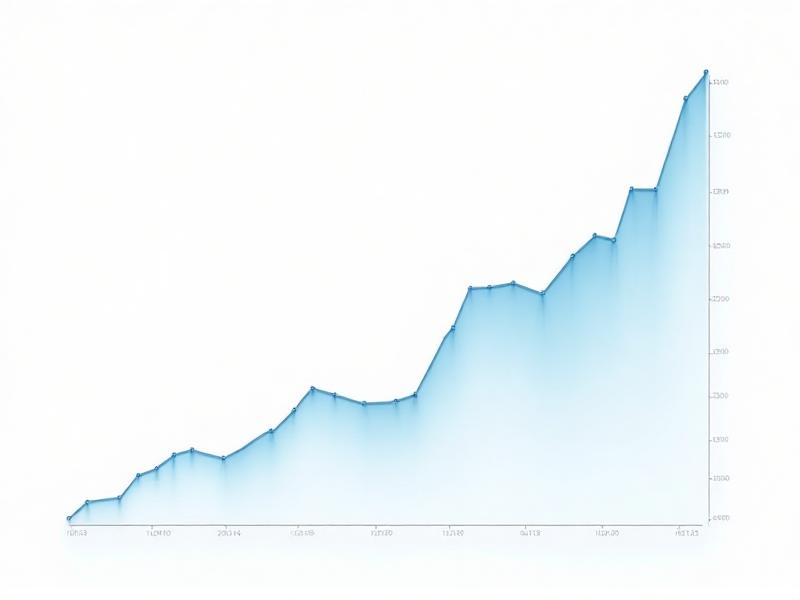Understanding ETFs and Their Role in Global Market Exposure
Exchange-Traded Funds (ETFs) have become a cornerstone of modern investing, offering a versatile and cost-effective way to gain exposure to global markets. Unlike traditional mutual funds, ETFs trade on stock exchanges, providing liquidity and flexibility. They are designed to track the performance of a specific index, sector, commodity, or asset class, making them an ideal tool for investors looking to diversify their portfolios across international markets.
One of the primary advantages of ETFs is their ability to provide instant diversification. By investing in a single ETF, you can gain exposure to hundreds or even thousands of companies across different countries and industries. This reduces the risk associated with investing in individual stocks or regions, as the performance of one company or market is unlikely to significantly impact the overall ETF.
Moreover, ETFs are known for their low expense ratios compared to actively managed funds. This cost efficiency is particularly beneficial for long-term investors, as lower fees can lead to higher net returns over time. Additionally, ETFs offer transparency, as their holdings are typically disclosed daily, allowing investors to know exactly what they own.
Types of ETFs for Global Market Exposure
When it comes to gaining global market exposure, there are several types of ETFs to consider. Broad-based international ETFs track major global indices like the MSCI World Index or the FTSE All-World Index, providing exposure to a wide range of developed and emerging markets. These ETFs are ideal for investors seeking broad diversification across multiple regions.
For those looking to focus on specific regions, regional ETFs offer targeted exposure to areas such as Europe, Asia, or Latin America. These ETFs allow investors to capitalize on the growth potential of particular markets while still maintaining a level of diversification within the region.
Country-specific ETFs are another option, providing exposure to the equity markets of individual countries. These ETFs can be useful for investors who have a strong conviction about the economic prospects of a particular country. However, they also come with higher risk, as the performance of the ETF is closely tied to the economic and political stability of the country.
Sector-specific global ETFs focus on industries such as technology, healthcare, or energy, offering exposure to companies within a particular sector across multiple countries. These ETFs can be a valuable addition to a portfolio for investors looking to capitalize on global trends within specific industries.
Benefits of Using ETFs for Global Diversification
ETFs offer several benefits for investors seeking global diversification. One of the most significant advantages is the ability to access a wide range of markets with a single investment. This is particularly valuable for individual investors who may not have the resources to build a diversified portfolio of international stocks on their own.
Another key benefit is the cost efficiency of ETFs. Because they are passively managed, ETFs typically have lower expense ratios than actively managed funds. This cost savings can add up over time, especially for long-term investors who are looking to maximize their returns.
ETFs also offer liquidity, as they can be bought and sold on stock exchanges throughout the trading day. This provides flexibility for investors who may need to adjust their portfolios quickly in response to changing market conditions. Additionally, the transparency of ETFs allows investors to see exactly what they are investing in, which can help them make more informed decisions.
Finally, ETFs can provide exposure to markets that may be difficult or expensive to access directly. For example, investing in emerging markets can be challenging due to regulatory restrictions and higher transaction costs. ETFs offer a convenient and cost-effective way to gain exposure to these markets without the need for direct investment.
Risks and Challenges of Investing in Global ETFs
While ETFs offer many benefits, there are also risks and challenges associated with investing in global ETFs. One of the primary risks is currency risk. When investing in international markets, fluctuations in exchange rates can impact the value of your investment. For example, if the U.S. dollar strengthens against other currencies, the value of your international ETF holdings may decrease, even if the underlying assets perform well.
Political and economic risks are another consideration. Global markets can be affected by geopolitical events, changes in government policies, and economic instability. These factors can lead to increased volatility and potential losses for investors in global ETFs.
Market risk is also a concern, as global markets can be more volatile than domestic markets. This is particularly true for emerging markets, which may experience rapid growth but also higher levels of risk. Investors need to be prepared for the possibility of significant fluctuations in the value of their investments.
Finally, there is the risk of concentration in certain regions or sectors. While ETFs offer diversification, some global ETFs may have a significant allocation to a particular region or industry. This can expose investors to higher levels of risk if that region or sector underperforms.
Strategies for Building a Global ETF Portfolio
Building a global ETF portfolio requires careful planning and consideration of your investment goals, risk tolerance, and time horizon. One strategy is to start with a core portfolio of broad-based international ETFs that provide exposure to a wide range of developed and emerging markets. This can serve as the foundation of your portfolio, offering broad diversification and reducing the impact of any single market's performance.
Next, consider adding regional or country-specific ETFs to target specific areas of interest. For example, if you believe that the Asian markets have strong growth potential, you might allocate a portion of your portfolio to an Asia-focused ETF. This allows you to capitalize on regional opportunities while still maintaining a diversified portfolio.
Sector-specific global ETFs can also be a valuable addition to your portfolio, particularly if you want to capitalize on global trends within specific industries. For instance, if you believe that the technology sector will continue to grow, you might invest in a global technology ETF to gain exposure to leading tech companies around the world.
Finally, it's important to regularly review and rebalance your portfolio to ensure that it remains aligned with your investment goals. This may involve adjusting your allocations based on changes in market conditions, your risk tolerance, or your investment horizon. By taking a strategic approach to building your global ETF portfolio, you can achieve a well-diversified investment that aligns with your long-term objectives.
Tax Considerations for Global ETF Investors
Investing in global ETFs can have tax implications that vary depending on your country of residence and the specific ETFs you invest in. One important consideration is the treatment of dividends. Many international ETFs distribute dividends from the underlying stocks, and these dividends may be subject to withholding taxes in the country where the stocks are domiciled.
For U.S. investors, foreign tax credits may be available to offset some of the withholding taxes paid on international dividends. However, the rules surrounding foreign tax credits can be complex, and it's important to consult with a tax advisor to understand how they apply to your specific situation.
Capital gains taxes are another consideration. When you sell an ETF, you may be subject to capital gains taxes on any profits. The rate at which these gains are taxed depends on how long you held the ETF and your country's tax laws. In some cases, holding an ETF for more than a year may qualify you for lower long-term capital gains tax rates.
Finally, it's important to be aware of the tax implications of currency fluctuations. If you invest in an international ETF that is denominated in a foreign currency, any gains or losses due to currency fluctuations may be subject to taxation. This can add another layer of complexity to your tax situation, and it's important to keep detailed records of your transactions to accurately calculate your tax liability.
Monitoring and Adjusting Your Global ETF Investments
Once you have built a global ETF portfolio, it's important to regularly monitor and adjust your investments to ensure they remain aligned with your goals. One key aspect of monitoring is keeping an eye on the performance of the underlying indices and markets that your ETFs track. This can help you identify any significant changes in market conditions that may warrant adjustments to your portfolio.
Rebalancing is another important aspect of managing your global ETF investments. Over time, the performance of different regions and sectors may cause your portfolio to become unbalanced. For example, if one region has performed particularly well, it may now represent a larger portion of your portfolio than you initially intended. Rebalancing involves selling some of the overperforming assets and reinvesting the proceeds in underperforming areas to restore your desired asset allocation.
It's also important to stay informed about global economic and political developments that could impact your investments. For example, changes in trade policies, interest rates, or geopolitical events can have significant effects on global markets. By staying informed, you can make more informed decisions about when to adjust your portfolio.
Finally, consider using tools and resources to help you monitor and manage your global ETF investments. Many brokerage platforms offer portfolio tracking and analysis tools that can provide insights into your portfolio's performance, risk, and diversification. These tools can help you make more informed decisions and ensure that your investments remain on track to meet your long-term goals.




